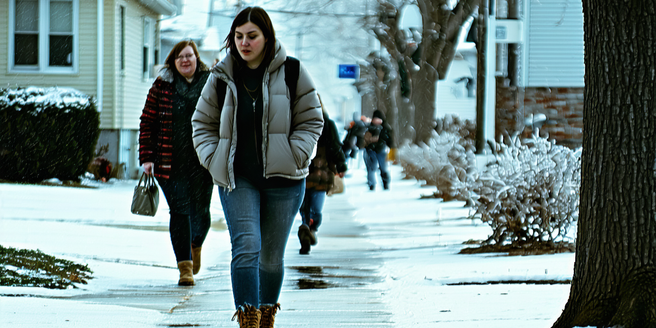
Recognizing Common Slip Hazards in Winter
Winter introduces multiple slip hazards, from icy sidewalks to wet floors indoors. Recognizing these risks is crucial in preventing accidents. Start by identifying the types of surfaces you and your loved ones frequent. It’s also imperative to consider how weather forecasts can help in planning safer routes. Make sure to pay extra attention to areas that might not immediately seem dangerous. Icy roads and pavements are apparent risks, but don’t overlook the potential dangers posed by rain-soaked entrances. Be wary of freshly cleaned floors in malls and other public spaces, where moisture can linger and freeze overnight. Recognizing these conditions aids in preparing for and avoiding potential accidents. Being observant during winter ensures safer navigation of outdoor and indoor spaces.
Essential Tips for Safe Footwear Choices
Choosing the right footwear in winter can drastically reduce slip risks. Look for shoes or boots with non-slip soles made from high-quality rubber. Footwear with deep treads provides extra grip on icy surfaces. Be sure to try on different sizes to ensure the best fit for maximum comfort and safety. Remember that style does not need to be sacrificed for safety. Consider shoes with insulated interiors to keep your feet warm while providing protection against moisture. Waterproof shoes are essential to avoid water seeping in, increasing discomfort and chances of slipping. Opt for boots with ankle support to provide stability while walking on uneven or ice-covered terrain. Investing in suitable winter footwear safeguards against potential slip accidents.
Practical Home and Yard Maintenance Strategies
Preparing your home and yard for winter can prevent slip hazards. Start by clearing sidewalks and driveways of snow and ice. It’s important to have the necessary tools on hand, such as a snow shovel and salt spreader, before the first snowfall. Use de-icing compounds to reduce the build-up of ice in high-traffic areas. Additionally, consider trimming any overhanging branches that could break under the weight of snow and cause hazards. Ensure pathways are well-lit to help identify potential hazards in low-visibility conditions. Regularly inspect outdoor steps and porches for damage that could become hazardous when icy. Clear gutters to prevent ice dams and potential water overflow, which can freeze on walking paths. These maintenance routines help you maintain a safe environment throughout the cold months.
Public Safety Measures to Consider
During winter, municipalities implement various safety measures to protect the public from slip hazards. These include routine salting and sanding of roads and walkways. Be attentive to local alerts regarding severe weather conditions that may affect travel safety. It is also advisable to wear appropriate footwear with good traction during these months. Taking these precautions can significantly reduce the risk of accidents and injuries. Community members can participate by reporting hazardous areas to local authorities, ensuring they are addressed promptly. Support initiatives aimed at enhancing public safety infrastructure, such as installing anti-slip mats in common public areas. Community collaboration is essential in reducing slip hazards and ensuring everyone’s safety in winter months.
What to Do If You Experience a Slip Injury
In the unfortunate event of a slip injury, it is important to take prompt action. Firstly, assess yourself for any signs of a serious injury, such as fractures or head trauma. Ensure you remain calm to better evaluate the situation. If necessary, seek medical attention immediately. It may also be beneficial to notify a supervisor or property owner of the incident. Document the details of the incident, including time, location, and witness accounts, which can be crucial for insurance or legal claims. Apply ice to reduce swelling and rest the affected area to prevent further injury. Consult healthcare professionals for a proper evaluation and follow their prescribed rehabilitation plan. Addressing slip injuries promptly aids in a swift and complete recovery.
